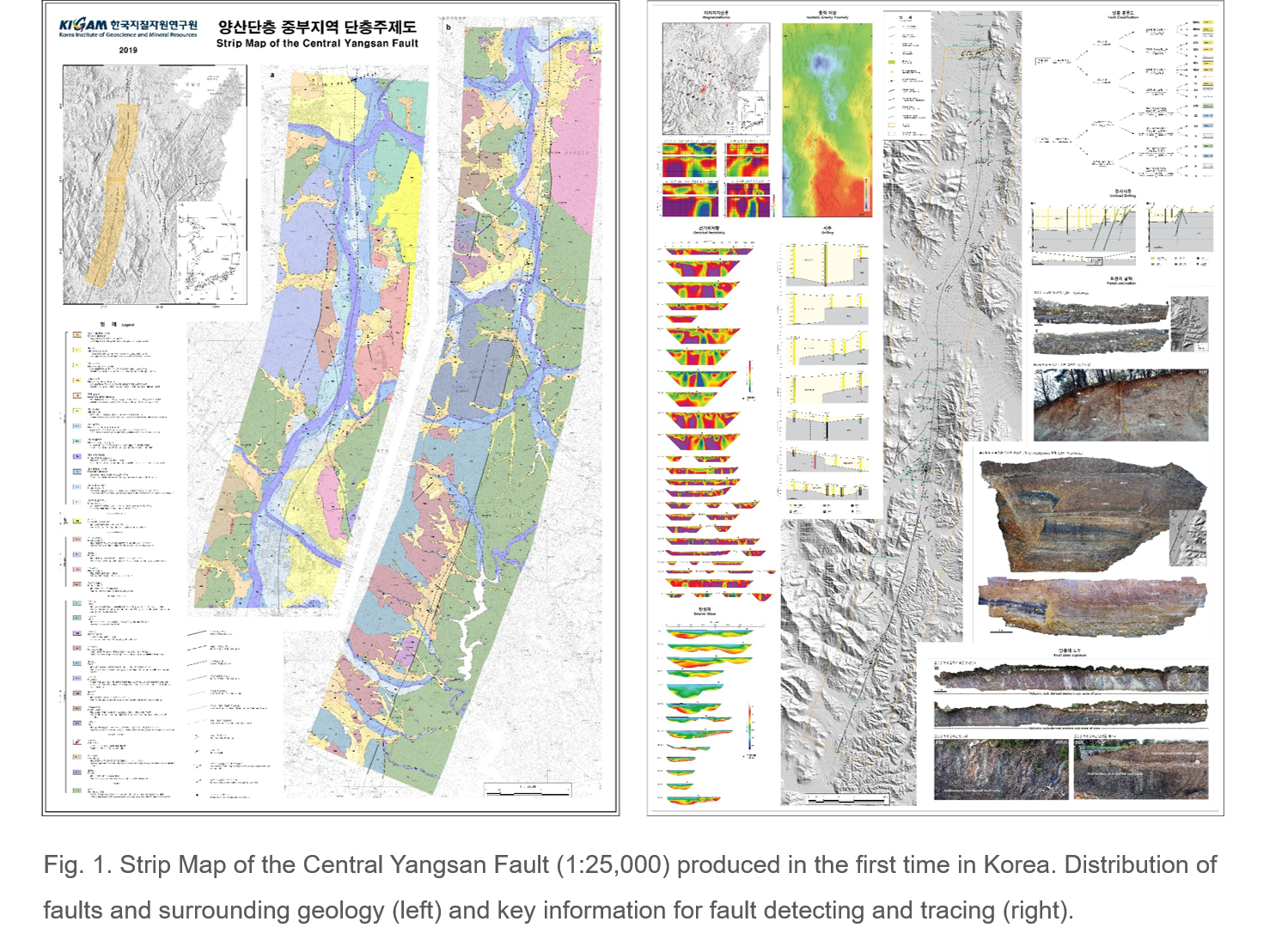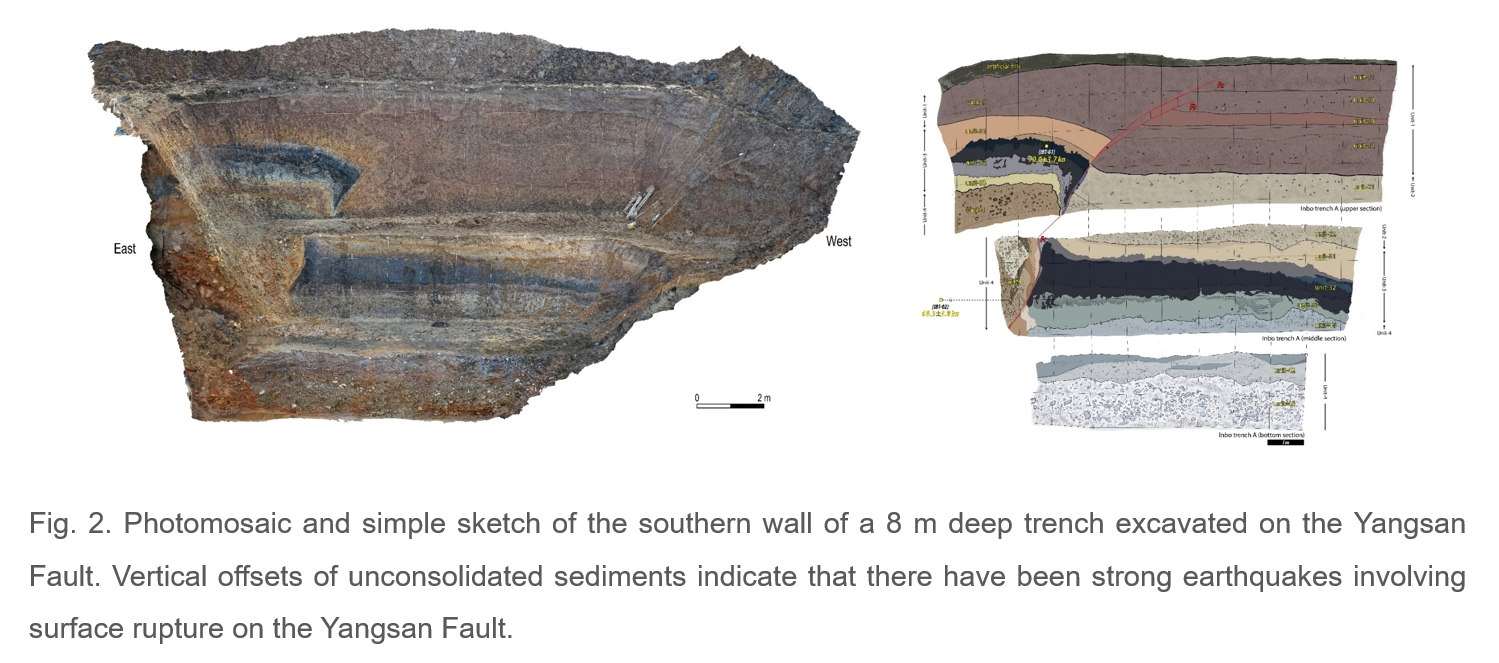
The spatial and temporal history of M ≥ 6 paleo-earthquakes in a given fault system could be used to assess potential hazards (magnitude and residual time) for future destructive earthquakes. In the Korean Peninsula located in an intraplate region, however, it is hard to investigate paleo-earthquakes based on only historical and instrumental seismic records due to low frequency of occurrence and long recurrence time of strong earthquakes. Although geomorphic and stratigraphic records of the paleoearthquakes in the surface geology could be key evidence of paleo-earthquakes, it is also not easy to detect and track active faults because most of the fault traces are covered by unconsolidated sediment deposits due to high erosion rate. In order to overcome the limitations of active fault investigation, the Center for Active Tectonics is applying innovative multidisciplinary approach, including advanced research techniques, to research surface deformations associated with paleo-earthquakes on large-scale faults to understand cycle model of destructive earthquakes.
In the year 2019, our group was carried out two R&D projects associated with active faults in Korea. As results, we produced Fault Strip Map (1:25,000), the first time in Korea, for the central part of the Yangsan Fault (Fig. 1) based on the interdisciplinary survey, including airborne LiDAR-based geomorphic analysis, field observations for both basement rocks and unconsolidated sediments, vertical and inclined drilling survey, multiple geophysical explorations (magnetotelluric, gravity, electrical resistivity, and seismic surveys), and paleoseismic excavations. In particular, we newly detected the Late Pleistocene activity of the Central-Southern Yangsan Fault, where the timing of paleo-earthquakes was unknown so far, based on an about 8 m deep excavation survey (Fig. 2). These newly acquired information of paleo-earthquakes could be used to evaluate recurrence characteristics of strong earthquakes in the region. Our results could be used as a standard procedure of fault and paleo-earthquake investigation in Korea.
Contact: Jin-Hyuck Choi (cjh9521@kigam.re.kr)

